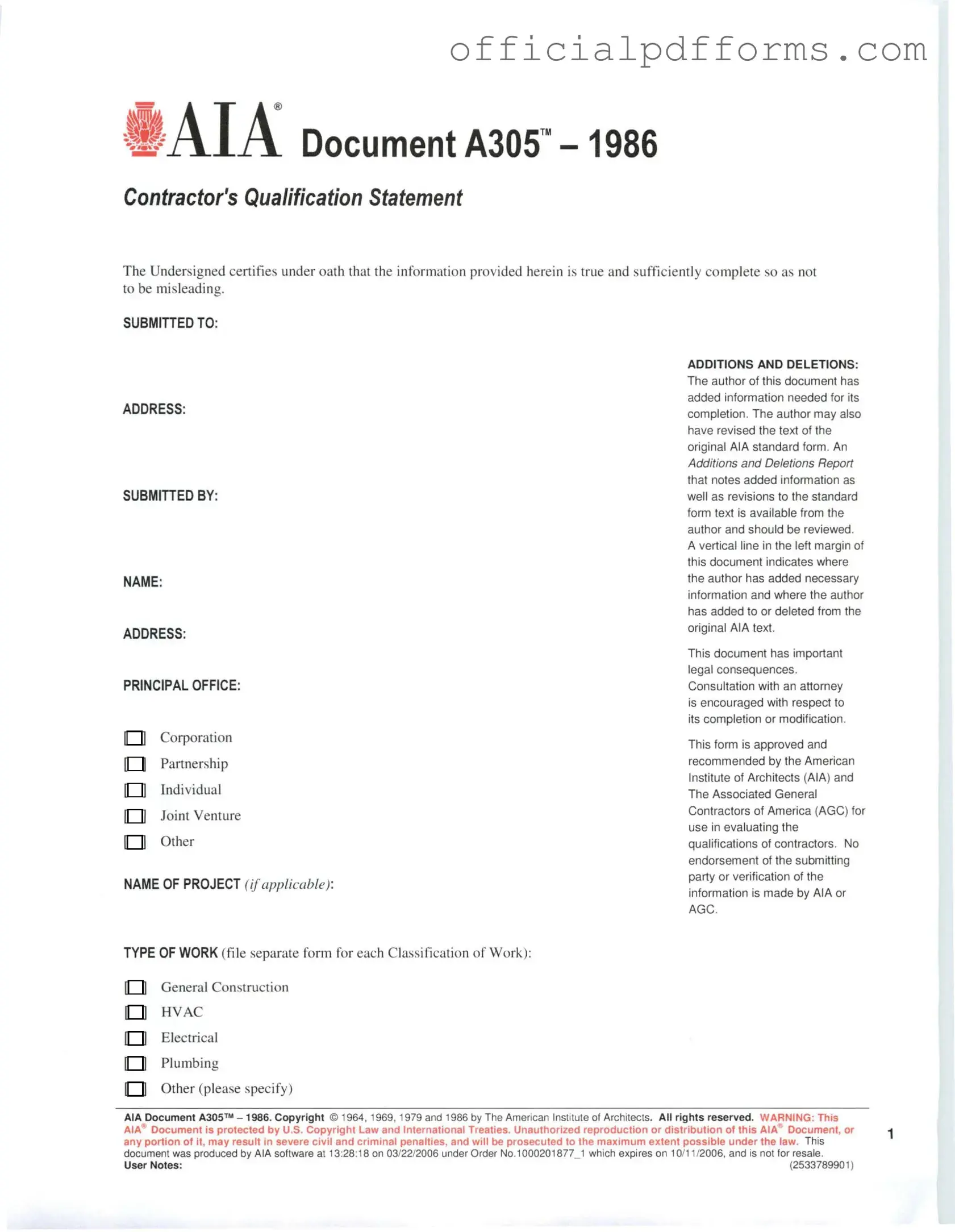The AIA A305 form, also known as the "Contractor's Qualification Statement," is a document used by contractors to provide information about their qualifications. This form helps project owners evaluate a contractor's experience, financial stability, and ability to complete a project successfully.
The AIA A305 form is primarily used by contractors seeking to bid on construction projects. It is also utilized by project owners and general contractors to assess potential subcontractors and suppliers. Any party involved in a construction project that requires a qualification assessment can benefit from this form.
The AIA A305 form includes various sections that gather essential information, such as:
-
Company background and history
-
Financial information
-
Project experience and references
-
Key personnel and their qualifications
-
Safety record and insurance coverage
This comprehensive information allows project owners to make informed decisions about contractor qualifications.
To complete the AIA A305 form, contractors should provide accurate and detailed information in each section. It is crucial to ensure that all data is current and reflects the company's capabilities. Once completed, the form should be signed and submitted to the relevant parties as part of the qualification process.
The AIA A305 form is not legally required, but it is widely accepted in the construction industry. Many project owners and general contractors prefer using it as part of their qualification process. Therefore, while it is not mandatory, submitting the form can enhance a contractor's chances of being selected for a project.
The AIA A305 form can be obtained from the American Institute of Architects (AIA) website or through various construction industry resources. It is available for purchase as a downloadable PDF. Ensure that you are using the most current version to comply with industry standards.
